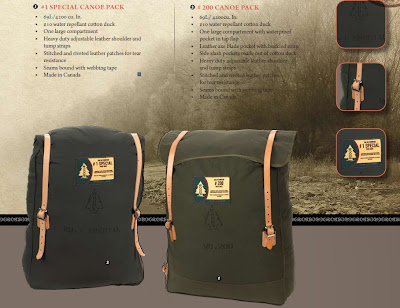


The temporary paddle sleeve
One option was to use a single piece as before and tightly stitch it similar to oar leathers documented by David Churbuck's well-illustrated blog post using a Shaw & Tenny leather kit. However, with canoe paddles, it seems that whipping the paddle with some sort of cordage is the more common route. There's a brief article in CanoeRoots Magazine(Summer 2008) on page 13 that describes whipping the paddle, though the online pics are small. Charles Burchill's page has some pics of the final result although both sources seem to favour usings modern cordage that I find clashes with the feel and texture of a traditional one-piece paddle. By the way, doing an internet image search for "paddle whipping" leads you to all sorts of nasty pics of people with bruised buttocks...should've known that before blindly typing in keywords!
Back on topic. Instead of using whipping twine, some 1/2" wide saddle string was obtained from my neighbourhood leather supply shop. Along with tiny brass tacks, my goal is to make a permanently fastened leather wrap similar to some of the Turtle Paddle brand paddles I've seen. To ensure the bottom of the leather wrap was even with the shaft, a 4 inch length was snipped from the tip to the edge. Once soaked in water to thoroughly wet the leather, the thinned end was tacked onto the shaft just above the throat.


Trimmed end; Tacked into place
Then the soaked leather was very carefully wrapped by stretching with all my strength and carefully positioning it on the shaft. Believe it or not, it was really tiring work on the muscles. The stretching is necessary so the leather shrinks when it dries and forms a much tighter grip on the wood, otherwise it would likely loosen and unravel.

Stretch and wrap slowly

Nearing the end
Couldn't take pictures of the final tacking as I had to work fast and it was a bit tricky. Essentially, I stretched the end as much as it would go and gently pressed in the tack in my thumb to mark the spot. A clamp was put on the working end of the wrap to prevent it from unravelling and with the hands free, I pulled the end back to the marked spot and hammered in the tack. The wrap was left to dry in the sun for a while and then the it was treated with SnoSeal, a Beeswax based waterproofing agent, which not only works well but smells like the tastiest thing ever. I used it with leather hiking boots and snowshoe bindings with great results
The technique involves heating up the leather with a hair dryer and then applying liberal amounts of product with a brush. The pores of the leather open with heat and absorb much of the melted wax until a saturation point. At that stage, the excess is removed with rag and the leather buffed.

Heating up the leather

Applying the waterproofing beeswax formula
Despite chilly autumn temperatures, I was able to test out the wrap during a short jaunt on the lake. You can see the water beading off the leather and after a while of exaggerated prying off the gunwales, the leather is secure and hasn't shifted. Some experts might question the use of this paddle accessory, but it doesn't add much weight, protects the paddle sufficiently, and dampens the sound of paddling with strokes like the Canadian / Northwoods which requires the use of the gunwale as a leverage point.


Waterproofed leather holding up; View off the bow












































